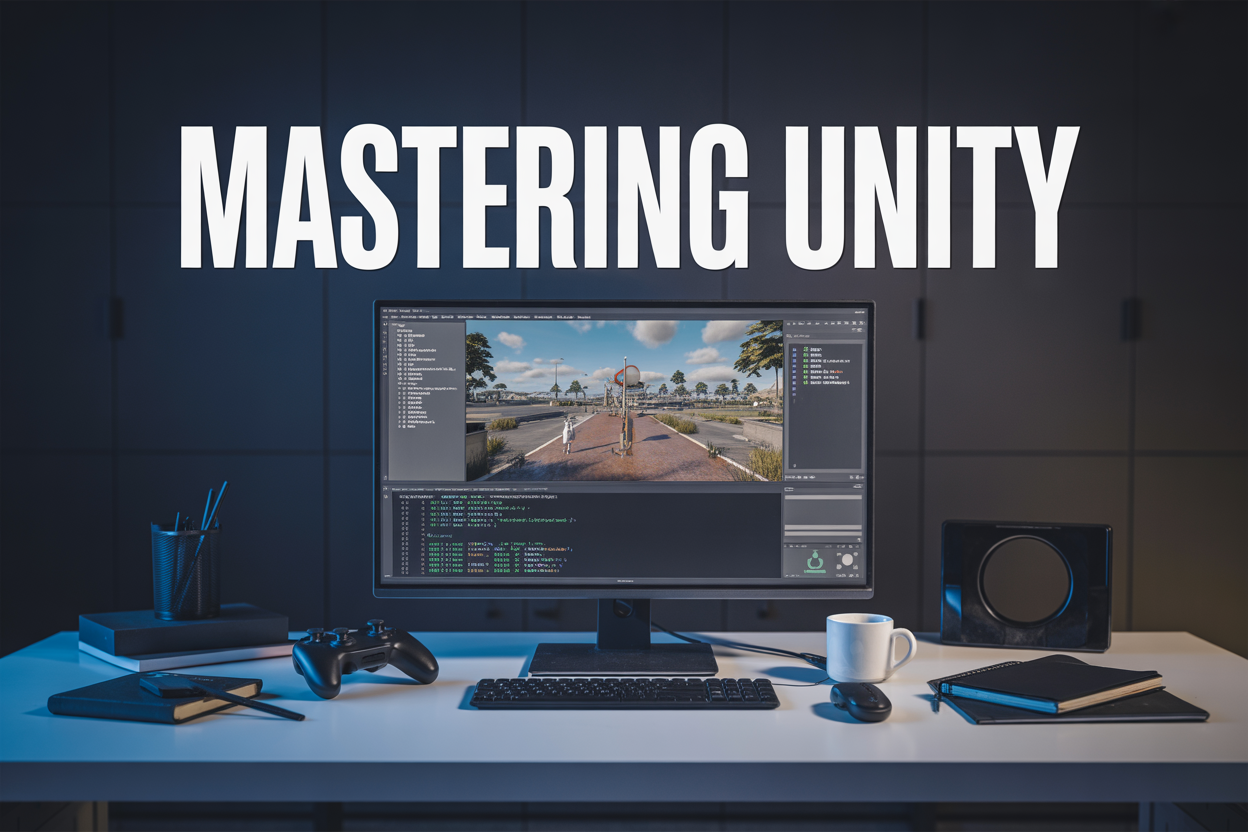Unity game development can make or break your project’s success. Poor optimization leads to laggy gameplay, frustrated players, and failed launches. Smart Unity best practices separate amateur projects from professional games that run smoothly across all platforms.
This guide targets Unity developers who want to build better games faster. You’ll learn proven game optimization techniques that experienced developers use to create polished, high-performance titles. Whether you’re working on your first indie game or managing a team project, these strategies will save you months of debugging and rework.
We’ll start with essential Unity project setup techniques that prevent common pitfalls before they happen. You’ll discover how proper folder structures, naming conventions, and initial configurations set your team up for long-term success.
Next, we’ll cover Unity performance optimization methods that keep your games running at 60 FPS. From efficient Unity code architecture patterns to advanced Unity graphics optimization, you’ll learn exactly which techniques deliver the biggest performance gains.
Finally, we’ll explore Unity profiling tools and asset management strategies that help you identify bottlenecks fast. These Unity-specific tools show you exactly where your game slows down, so you can fix problems before players notice them.
Essential Unity Project Setup for Maximum Efficiency
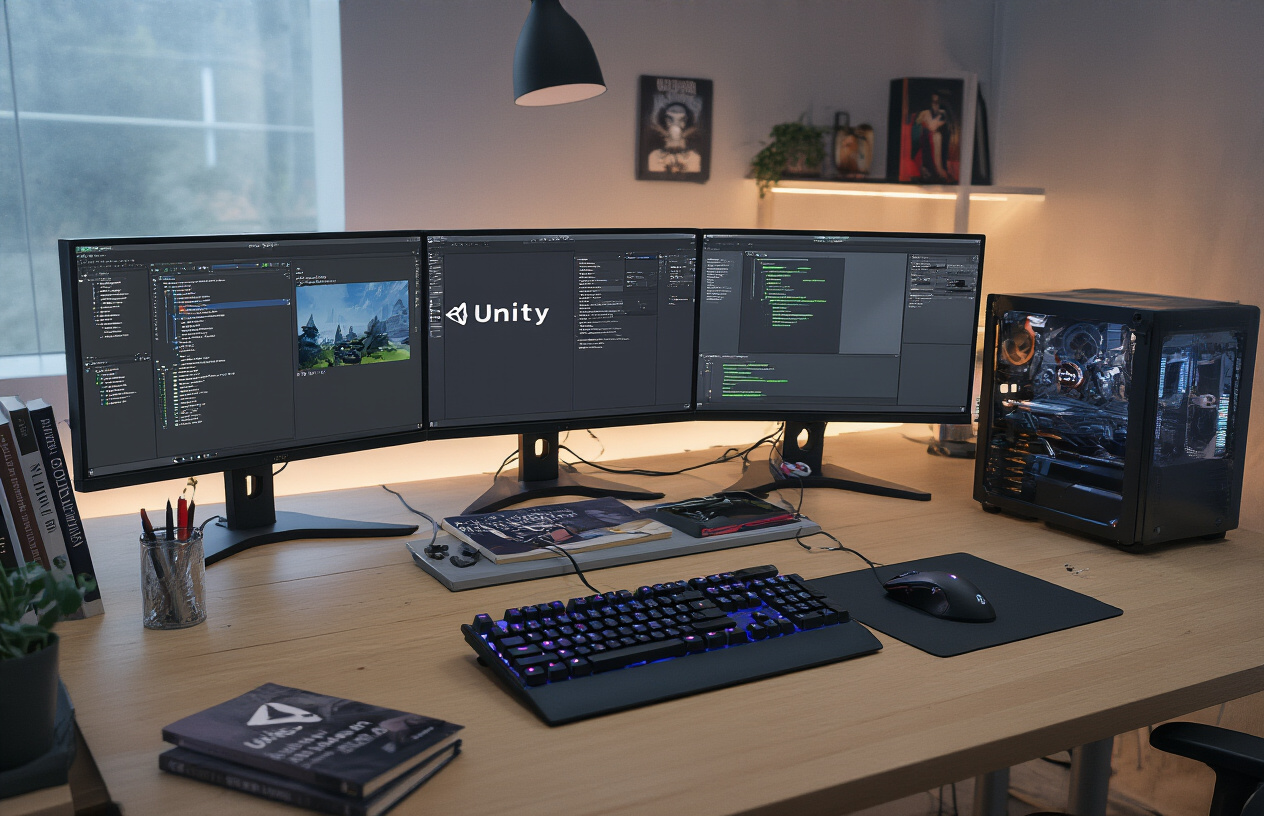
Organize Assets with Smart Folder Structures
Creating a logical folder hierarchy forms the backbone of any successful Unity project setup. Start with a root-level Assets folder containing clear, descriptically named directories like Scripts, Textures, Models, Audio, Materials, Prefabs, and Scenes. This Unity best practices approach saves countless hours during development and makes onboarding new team members effortless.
Break down larger categories into meaningful subdirectories. For Scripts, organize by functionality: Player, UI, Managers, Utilities, and Third-Party. Textures should be sorted by usage: Characters, Environment, UI, and Effects. Keep naming consistent across all folders – if you use PascalCase for one directory, use it everywhere.
Consider implementing a numbering system for scenes like “01_MainMenu” and “02_Level01” to maintain logical order. This game development workflow enhancement prevents the common headache of hunting through dozens of randomly ordered scenes.
Configure Version Control for Seamless Collaboration
Version control transforms chaotic Unity game development into organized, trackable progress. Git remains the gold standard, but proper Unity configuration requires specific settings to avoid merge conflicts and repository bloat.
Configure Unity’s Version Control settings to use “Visible Meta Files” and set Asset Serialization to “Force Text.” This makes Unity’s binary files readable by version control systems and dramatically reduces merge conflicts. Create a comprehensive .gitignore file that excludes Unity-generated folders like Library, Temp, and Logs while preserving essential project files.
Set up Git LFS (Large File Storage) for binary assets like textures, models, and audio files. Without LFS, your repository size explodes quickly, making cloning and pulling painfully slow. Configure LFS to handle common Unity file extensions:
| File Type | Extensions |
|---|---|
| Textures | .png, .jpg, .tga, .psd |
| Models | .fbx, .obj, .blend |
| Audio | .wav, .mp3, .ogg |
| Video | .mp4, .mov |
Establish branching strategies early. Use feature branches for new mechanics, hotfix branches for critical bugs, and maintain a stable main branch for builds. This Unity project setup approach prevents development disasters and keeps everyone productive.
Establish Coding Standards and Naming Conventions
Consistent coding standards eliminate confusion and accelerate development across teams of any size. Adopt C# naming conventions religiously: PascalCase for classes, methods, and properties; camelCase for private fields and local variables; ALL_CAPS for constants.
Create coding guidelines that cover common Unity patterns. Use meaningful names like PlayerHealthManager instead of generic terms like Manager1. Establish prefixes for UI elements: btn_ for buttons, txt_ for text fields, img_ for images. This makes navigating complex UI hierarchies much faster.
Document your standards in a shared document that covers:
- Variable and method naming patterns
- File organization requirements
- Comment standards for public methods
- Unity-specific conventions for MonoBehaviour classes
- Prefab naming and organization rules
Implement code review processes to maintain these standards. Tools like Unity’s built-in formatter and external linters catch deviations before they become embedded in your codebase. Consistent code reads like a single developer wrote it, regardless of team size.
Set Up Proper Scene Management Architecture
Smart scene architecture prevents the dreaded “everything in one massive scene” problem that kills performance and team productivity. Design a modular approach where each scene serves a specific purpose: MainMenu, GameplayLevel01, LoadingScreen, and Settings.
Implement a Scene Manager singleton that handles transitions smoothly. This system should manage loading states, preserve necessary data between scenes, and handle cleanup of temporary objects. Use Unity’s SceneManager.LoadSceneAsync() for seamless transitions that don’t freeze gameplay.
Create template scenes for common layouts. A gameplay template might include standard managers (GameManager, AudioManager, UIManager), lighting setup, and camera configurations. New levels start from this template, ensuring consistency and reducing setup time.
Organize scene hierarchies with empty GameObjects as organizational containers: Environment, Lighting, UI, Managers, and Dynamic Objects. This Unity performance optimization technique makes scenes navigable and helps identify performance bottlenecks quickly. Name these containers clearly and collapse them in the hierarchy view to reduce visual clutter during development.
Code Architecture Best Practices That Scale
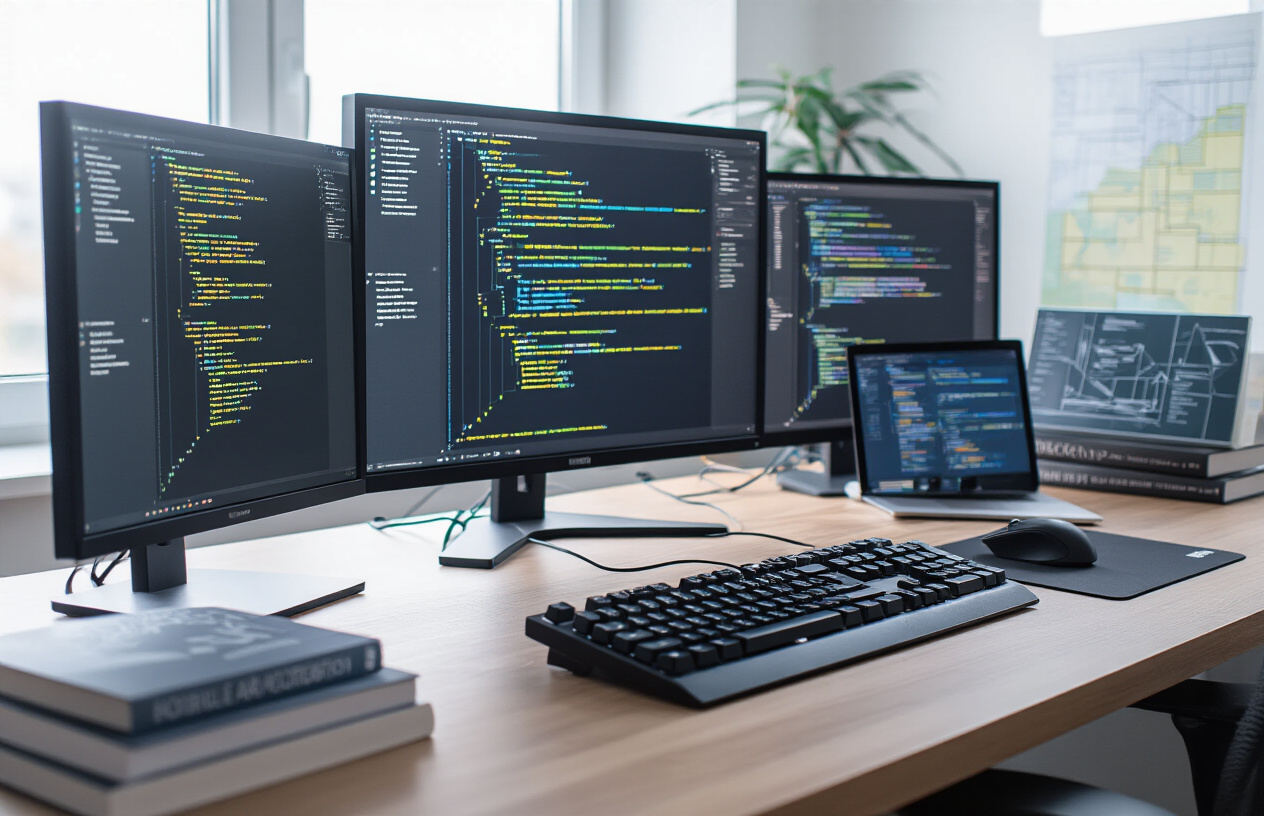
Implement SOLID Principles for Maintainable Scripts
SOLID principles transform chaotic Unity codebases into maintainable masterpieces. The Single Responsibility Principle means each script handles one job – your PlayerController shouldn’t manage inventory, health, and movement simultaneously. Break these into separate components that work together.
Open/Closed Principle shines with Unity’s inheritance system. Create base classes for enemies, weapons, or abilities that you can extend without modifying existing code. Your BaseWeapon class handles common functionality while SwordWeapon and BowWeapon add specific behaviors.
Liskov Substitution keeps your polymorphism clean. Any derived class should work wherever its base class does. If you swap out different enemy types, your spawn system shouldn’t break.
Interface Segregation prevents bloated contracts. Instead of one massive IGameObject interface, create focused ones like IMoveable, IDamageable, and IInteractable. Components implement only what they need.
Dependency Inversion flips traditional thinking. High-level systems depend on abstractions, not concrete implementations. Your GameManager references an IScoreSystem interface, not a specific ScoreManager class. This makes testing easier and systems more flexible.
Master Component-Based Design Patterns
Unity’s component system encourages modular thinking, but many developers still create monolithic scripts. Smart component design separates concerns into focused, reusable pieces.
The Composition pattern works brilliantly with Unity’s architecture. Instead of massive inheritance hierarchies, build objects by combining components. A flying enemy combines Movement, Health, Combat, and Flying components rather than inheriting from FlyingEnemyBase.
Strategy pattern handles varying behaviors elegantly. Create interchangeable behavior components like different AI strategies, movement patterns, or attack types. Your enemy controller switches between AggressiveAI and DefensiveAI components based on game state.
Observer pattern through Unity events keeps components decoupled. When health reaches zero, broadcast a death event rather than directly calling respawn methods. Multiple systems can respond without tight coupling.
State machines manage complex behaviors cleanly. Whether handling player states (idle, running, jumping) or enemy AI (patrolling, chasing, attacking), dedicated state components keep logic organized and debuggable.
Factory patterns work well for object creation. Instead of scattered Instantiate calls, centralize spawning logic in factory components that handle prefab selection, positioning, and initialization.
Create Reusable Systems with ScriptableObjects
ScriptableObjects revolutionize Unity data management and system design. These asset-based containers move hard-coded values into designer-friendly files while enabling powerful architectural patterns.
Data-driven design starts with ScriptableObjects holding game configuration. Create weapon data, enemy stats, level parameters, and UI settings as assets. Designers modify values without touching code, and changes persist across scenes.
Event systems built on ScriptableObjects provide global communication without singletons. Create GameEvent assets that any component can raise or listen to. Your UI responds to health changes, sound effects trigger on combat events, and achievements unlock on progress milestones.
Runtime sets track object collections dynamically. A RuntimeSet<Enemy> ScriptableObject maintains active enemies automatically as they spawn and die. Your minimap, target selection, and wave completion systems reference this central list.
Architecture assets define system relationships. Create ScriptableObject-based service locators, configuration managers, and dependency containers. These assets wire up your game systems cleanly and visibly.
Variable references replace direct singleton access. Float references for health, transform references for targets, and string references for current levels keep components loosely coupled while maintaining easy inspector assignment.
Optimize Script Execution Order and Dependencies
Script execution timing can make or break Unity game development. Understanding and controlling when code runs prevents frustrating bugs and improves performance.
Execution order dependencies often hide in plain sight. Your camera controller needs the player’s new position before it calculates follow logic. Health UI requires updated health values before rendering. Input systems should process before movement systems consume those inputs.
Unity’s Script Execution Order settings provide explicit control over component timing. Set critical systems like input managers to execute early (-100) and UI updates to run late (100). This prevents frame-delay issues and synchronization problems.
Initialization sequences require careful orchestration. Use Awake for internal setup, Start for external references, and custom Initialize methods for complex multi-step procedures. Create initialization managers that ensure proper startup sequencing across systems.
Frame timing optimization reduces CPU spikes. Spread expensive operations across multiple frames using coroutines or custom update managers. Process large collections in chunks rather than all at once.
Dependency injection resolves circular references elegantly. Instead of components finding each other through GameObject.Find, inject references through constructors, properties, or initialization methods. This makes dependencies explicit and testable.
Event-driven updates replace polling patterns. Rather than checking conditions every frame, trigger updates only when relevant state changes occur. Health bars update when damage happens, not every Update call.
Build Robust Event Systems for Decoupled Communication
Event-driven architecture transforms rigid, coupled Unity projects into flexible, maintainable systems. Well-designed event systems enable components to communicate without knowing about each other directly.
UnityEvent provides the foundation for inspector-assignable event systems. Create custom UnityEvent types for specific scenarios like OnPlayerDeath, OnLevelComplete, or OnItemCollected. Designers can wire up responses visually without code changes.
Global event systems handle game-wide communication. Implement a central EventManager that manages event subscriptions and dispatching. Components register for events they care about and automatically receive notifications when those events fire.
Typed event systems prevent runtime errors and improve performance. Instead of string-based events, create specific event classes with strongly-typed data. HealthChangedEvent carries old and new health values, while ItemPickedUpEvent includes item type and quantity.
Event queuing manages timing and performance. Buffer events during critical operations and process them when safe. This prevents cascading updates during physics calculations or UI rebuilding.
Conditional event systems add intelligence to communication. Events can carry context data that listeners use to filter relevance. Damage events might include damage type, allowing armor systems to respond only to physical damage.
Cleanup and memory management prevent event system leaks. Implement automatic unsubscription when components destroy, weak references for temporary listeners, and periodic cleanup of orphaned subscriptions.
Performance Optimization Strategies for Smooth Gameplay
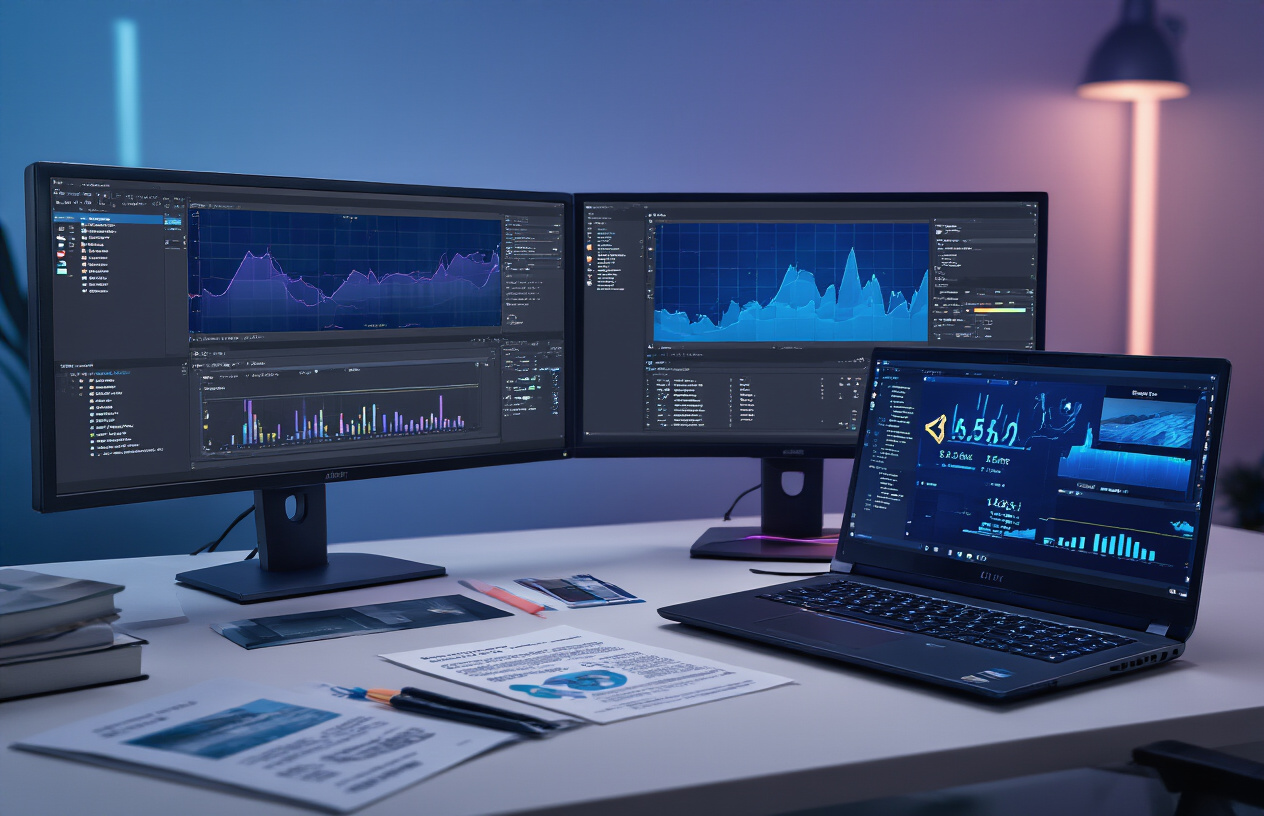
Master Frame Rate Optimization Techniques
Your game’s frame rate makes or breaks the player experience. Start by setting a target frame rate that matches your platform – 60 FPS for PC and consoles, 30 FPS for mobile devices. Unity’s Application.targetFrameRate property lets you cap the frame rate, preventing unnecessary CPU cycles.
The Unity Profiler becomes your best friend here. Check the CPU and GPU usage patterns to identify bottlenecks. CPU-bound issues often stem from heavy scripts running every frame, while GPU bottlenecks usually point to overdraw or complex shaders.
Move expensive calculations away from Update() methods. Use coroutines for operations that don’t need frame-perfect timing, and implement object pooling for frequently spawned objects like bullets or particles. Cache component references instead of calling GetComponent() repeatedly – this simple change can boost performance significantly.
Consider implementing a frame rate adaptive system that adjusts quality settings dynamically. When frame rates drop, reduce particle density, lower shadow resolution, or disable non-essential visual effects. This keeps gameplay smooth even on weaker hardware.
Reduce Draw Calls Through Smart Batching
Draw calls are the enemy of smooth Unity performance optimization. Each draw call requires the CPU to communicate with the GPU, creating overhead that adds up quickly. Modern games should aim for under 100 draw calls per frame on mobile, and under 500 on desktop platforms.
Static batching works wonders for objects that never move. Mark static objects in your scene and Unity automatically combines them into single draw calls. Dynamic batching handles moving objects, but only works with objects sharing the same material and meeting specific vertex count limits.
GPU Instancing takes batching further by rendering multiple copies of the same mesh in a single draw call. Perfect for grass, trees, or enemy hordes. Enable GPU Instancing on your materials and use Graphics.DrawMeshInstanced() for maximum efficiency.
| Batching Method | Best For | Limitations |
|---|---|---|
| Static Batching | Non-moving objects | Increases build size |
| Dynamic Batching | Small moving objects | 900 vertex limit |
| GPU Instancing | Identical objects | Same mesh/material required |
Material consolidation reduces draw calls dramatically. Instead of having separate materials for similar objects, use texture atlases to combine multiple textures into one material. This single change can cut draw calls by 70% or more.
Optimize Memory Usage and Garbage Collection
Memory management directly impacts your game’s stability and performance. Garbage collection pauses can cause noticeable frame drops, especially on mobile devices where memory is limited.
Avoid creating new objects in frequently called methods like Update() or FixedUpdate(). Instead of “new Vector3()” every frame, cache commonly used vectors as static readonly variables. String concatenation creates garbage – use StringBuilder for dynamic text or string.Format() for occasional formatting.
Object pooling eliminates allocation spikes from instantiating and destroying objects. Create pools for bullets, UI elements, particle systems, and any objects with short lifespans. A well-implemented pool system can reduce garbage collection by 90%.
Monitor memory allocation patterns using the Unity Profiler’s Memory module. Look for allocation spikes and track them to their source. Pay special attention to:
- Temporary arrays created by GetComponents() calls
- String operations in loops
- Frequent instantiation without pooling
- Large texture allocations
Set reasonable texture import settings. A 2048×2048 uncompressed texture uses 16MB of memory, while the same texture compressed might use only 2-4MB. Use appropriate compression formats for your target platform – DXT on PC, ASTC on mobile.
Implement Efficient Asset Streaming
Asset streaming prevents memory bloat by loading content when needed and unloading it when not. This technique becomes essential for larger games where loading everything upfront isn’t feasible.
Unity’s Addressables system provides robust asset streaming capabilities. Mark assets as addressable and load them asynchronously using Addressables.LoadAssetAsync(). This approach prevents blocking the main thread during asset loading and provides better memory control.
Level streaming works well for open-world or large linear games. Use SceneManager.LoadSceneAsync() with LoadSceneMode.Additive to load new areas while keeping core systems active. Implement distance-based loading where areas beyond a certain range get unloaded automatically.
Audio streaming saves significant memory since audio files can be quite large. Set import settings to “Streaming” for background music and ambient sounds. Keep only short sound effects in memory as compressed audio.
Create loading priorities for different asset types:
- Critical gameplay assets: Load immediately
- Visual assets: Load during gameplay transitions
- Audio assets: Stream as needed
- Optional content: Load in background during idle periods
Preloading predictive systems enhance the player experience by anticipating what assets might be needed next. Track player movement patterns and preload assets in their likely path. This creates seamless transitions without waiting for loading screens.
Graphics and Rendering Optimization Excellence
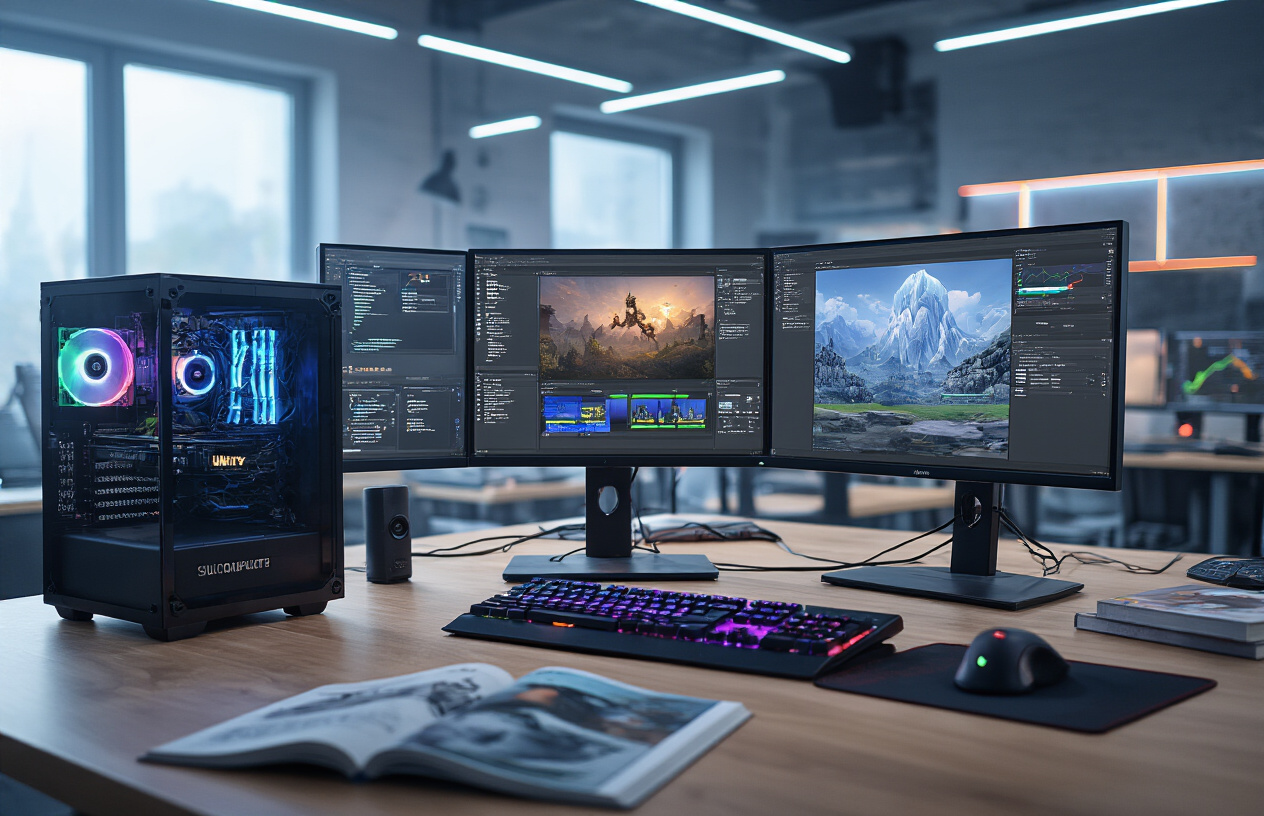
Choose the Right Rendering Pipeline for Your Project
Unity offers several rendering pipelines, and picking the wrong one can seriously hurt your game’s performance. The Built-in Render Pipeline works great for simple projects but struggles with complex lighting scenarios. Universal Render Pipeline (URP) delivers excellent performance on mobile devices and lower-end hardware while supporting modern rendering features. High Definition Render Pipeline (HDRP) shines for high-end visuals but demands powerful hardware.
Your target platform plays a huge role in this decision. Mobile games almost always benefit from URP’s efficient rendering path and simplified lighting model. PC and console projects targeting high-end visuals should consider HDRP, especially for realistic environments. The Built-in pipeline remains viable for 2D games or simple 3D projects where development speed matters more than cutting-edge graphics.
| Pipeline | Best For | Performance | Visual Quality |
|---|---|---|---|
| Built-in | Legacy projects, rapid prototyping | Variable | Basic to Good |
| URP | Mobile, VR, mid-range hardware | Excellent | Good to Great |
| HDRP | High-end PC/Console | Demanding | Exceptional |
Optimize Textures and Materials for Better Performance
Texture optimization directly impacts both memory usage and rendering performance. Start by choosing appropriate texture formats for your target platform – BC7 for desktop, ASTC for modern mobile devices, and ETC2 for older Android hardware. Texture streaming helps manage memory by loading high-resolution textures only when needed, preventing memory spikes on resource-constrained devices.
Material batching reduces draw calls significantly. Combine textures into atlases whenever possible, allowing multiple objects to share the same material. This technique works especially well for UI elements, environment props, and particle effects. Keep material property variations to a minimum – each unique material property combination creates a separate draw call.
Essential texture optimization steps:
- Set appropriate max texture sizes (1024×1024 for mobile, 2048×2048 for PC)
- Enable texture compression for all platforms
- Use mipmaps for 3D textures to improve distant object rendering
- Implement texture streaming for open-world games
- Create texture atlases for similar objects
Master Level of Detail (LOD) Implementation
LOD systems dramatically improve performance by showing simplified geometry at distance. Unity’s LOD Group component makes implementation straightforward, but the key lies in creating effective LOD meshes. Each LOD level should reduce polygon count by roughly 50% while maintaining the object’s silhouette and key visual features.
Automatic LOD generation tools help, but manually created LODs always produce better results. Focus on preserving important details that players actually notice while aggressively reducing geometry in areas that won’t be visible at distance. Vegetation benefits enormously from LOD systems – distant trees can drop from thousands of triangles to simple billboard sprites.
LOD best practices:
- Create 3-4 LOD levels for complex objects
- Use impostor rendering for extremely distant objects
- Set LOD transition distances based on object importance
- Test LOD switching to avoid popping artifacts
- Consider different LOD strategies for different object types
Implement Effective Occlusion Culling Strategies
Occlusion culling prevents Unity from rendering objects blocked by other geometry, saving valuable GPU cycles. Unity’s built-in occlusion culling works well for indoor scenes with clear sight-line blockers like walls and buildings. Bake occlusion data during development to avoid runtime performance costs.
Manual occlusion techniques often prove more effective than Unity’s automatic system. Frustum culling extensions can disable entire object groups when they’re outside the camera view. Distance-based culling removes objects beyond a certain range, particularly useful for outdoor scenes with many small details.
Occlusion culling strategies:
- Bake occlusion culling data for static geometry
- Use manual trigger zones for complex scenes
- Implement distance-based culling for small objects
- Create occlusion volumes for large blocking geometry
- Combine with frustum culling for maximum efficiency
Utilize Shader Optimization Techniques
Shader performance directly affects frame rate, especially on mobile devices. Vertex shaders generally perform better than fragment shaders because they process fewer data points. Move calculations from fragment to vertex shaders whenever possible, even if it means accepting slightly lower visual quality.
Conditional statements in shaders kill performance through branch divergence. Replace if-statements with mathematical operations or shader variants. Unity’s shader variants system generates optimized versions for different features, eliminating unused code paths. Profile shader performance using Unity’s Frame Debugger to identify bottlenecks.
Shader optimization techniques:
- Minimize texture samples in fragment shaders
- Use shader LOD to provide fallback versions
- Implement shader variants instead of runtime branches
- Pack multiple values into single texture channels
- Cache expensive calculations in vertex shaders
- Profile GPU timing with Unity’s graphics profiler
Mobile shaders require special attention due to limited GPU capabilities. Avoid complex mathematical operations like pow() and exp() in favor of lookup textures. Keep instruction counts low – aim for under 64 instructions per fragment shader on mobile platforms.
Asset Management and Resource Optimization
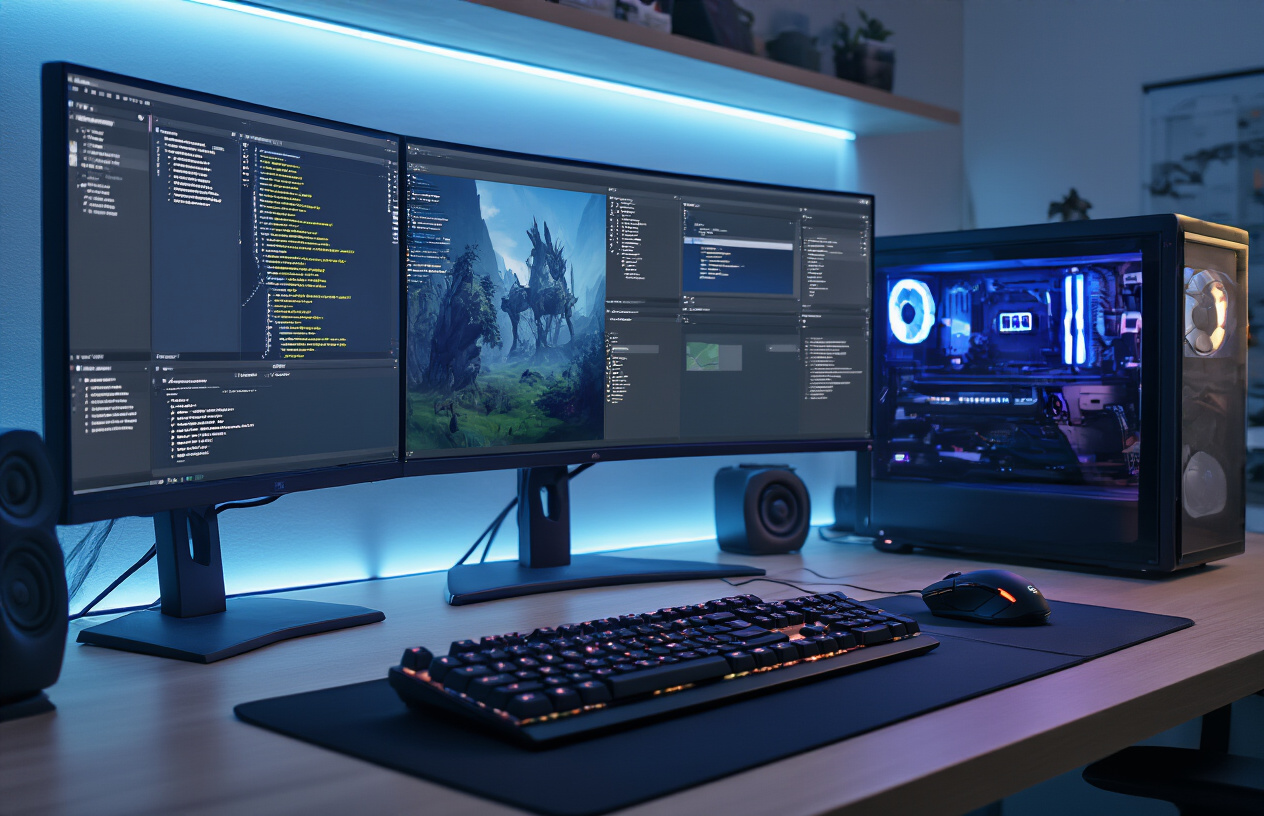
Compress Audio Files Without Quality Loss
Audio compression makes the difference between a game that downloads quickly and one that players skip entirely. Unity supports multiple audio formats, but choosing the right one depends on your specific needs. For background music, Ogg Vorbis delivers excellent compression ratios while maintaining quality that most players won’t notice. Voice acting and dialogue work best with compressed formats around 128-192 kbps, striking the perfect balance between file size and clarity.
The key lies in Unity’s audio import settings. Set your compression format to Vorbis for most audio files, but don’t use the same compression level for everything. Ambient sounds and background music can handle more aggressive compression, while critical sound effects like gunshots or explosions need higher quality settings. Use Unity’s preview feature to test how different compression levels affect your audio before committing.
Consider implementing audio streaming for longer tracks. Instead of loading entire music files into memory, stream them directly from storage. This approach dramatically reduces your game’s memory footprint, especially important for mobile Unity game development projects.
Optimize 3D Models and Animations
Polygon count directly impacts performance, but smart modeling practices matter more than raw numbers. Focus on optimizing models based on their screen time and distance from the camera. A character model that appears in close-up cinematics needs different treatment than background NPCs that players barely notice.
Use Unity’s LOD (Level of Detail) system to automatically switch between model versions based on distance. Create three versions of important models: high-detail for close viewing, medium for standard gameplay, and low-poly for distant objects. This Unity performance optimization technique can double or triple your frame rates in complex scenes.
Animation optimization often gets overlooked, but it’s equally important. Remove unnecessary keyframes from animations and use Unity’s compression settings to reduce file sizes. The “Optimal” compression setting works well for most animations, but experiment with “Keyframe Reduction” for subtle improvements.
Bone count matters significantly for animated characters. Mobile games should target 30-50 bones maximum, while PC games can handle 100+ bones without issues. Remove helper bones and unused joints during the import process to streamline your rigs.
Implement Smart Texture Atlasing
Texture atlasing combines multiple small textures into larger ones, reducing draw calls and improving rendering performance. Unity’s built-in Sprite Atlas system handles 2D atlasing automatically, but 3D texture management requires more planning.
Group textures logically when creating atlases. Combine textures that share materials or appear in the same scenes together. This Unity asset management strategy minimizes texture swapping during runtime, keeping your graphics pipeline smooth.
Pay attention to atlas size limits. Most mobile devices handle 2048×2048 textures without problems, but 4096×4096 might cause issues on older hardware. Test your target platforms thoroughly and create multiple atlas sizes if needed.
Power-of-two dimensions still matter for optimal GPU performance. Stick to 512, 1024, 2048, or 4096 pixel dimensions for your atlases. Non-power-of-two textures work but may impact performance on certain graphics hardware.
Use Unity’s Sprite Atlas variant system for different quality levels. Create high-resolution atlases for premium devices and compressed versions for budget hardware. This approach gives you flexibility without maintaining separate texture sets.
Master Asset Bundle Management
Asset bundles let you download content after release, update specific game parts without full updates, and manage memory more efficiently. Plan your bundle structure during early development, not as an afterthought.
Organize bundles by feature rather than asset type. Create separate bundles for each level, character set, or game mode. This Unity game development approach allows players to download only the content they need, reducing initial download sizes significantly.
Bundle dependencies require careful planning. When Asset A references Asset B, Unity automatically includes both in the same bundle unless you specify otherwise. Use the Asset Bundle Browser tool to visualize and manage these relationships before they become problematic.
Implement progressive downloading for better user experience. Load essential bundles first, then download additional content in the background while players engage with available features. This technique works particularly well for mobile games where download interruptions are common.
Cache management becomes critical with asset bundles. Implement a system that removes old bundles when storage space runs low, but keep frequently accessed content available. Monitor bundle usage patterns and adjust your caching strategy based on actual player behavior rather than assumptions.
Compression settings affect both download times and loading performance. LZ4 compression loads faster but creates larger files, while LZMA achieves better compression ratios at the cost of decompression time. Choose based on your target platform’s storage and bandwidth constraints.
Unity-Specific Tools and Profiling for Peak Performance
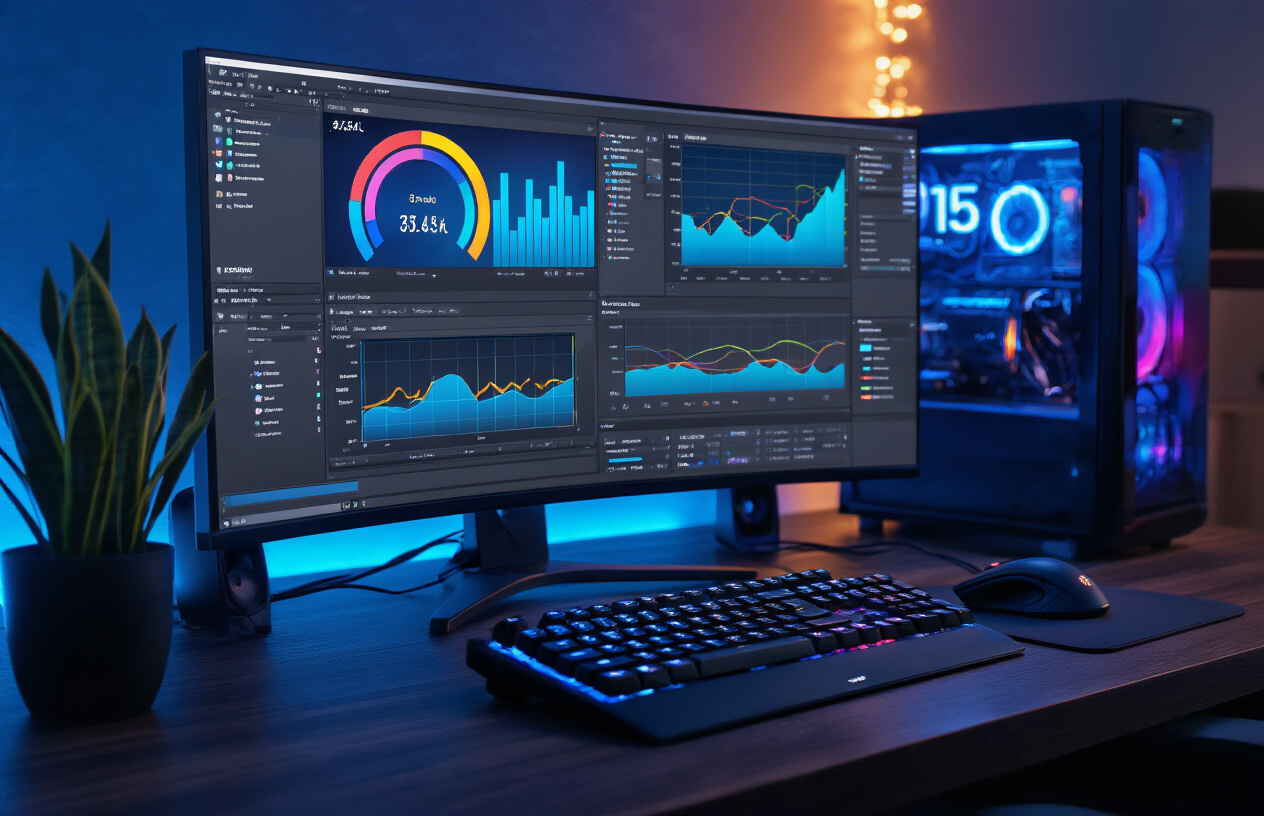
Leverage Unity Profiler for Performance Analysis
Unity’s built-in profiler serves as your primary weapon for identifying performance bottlenecks in your game. This powerful Unity profiling tool provides real-time insights into CPU usage, memory allocation, rendering performance, and audio processing across different systems.
Start by enabling the profiler during gameplay sessions, not just in the editor. Connect to your target device and monitor performance metrics while players interact with your game naturally. Pay close attention to the CPU usage timeline, which reveals frame rate drops and processing spikes. The memory profiler section shows exactly where your game allocates and releases memory, helping you spot memory leaks before they impact player experience.
The GPU usage panel becomes critical when optimizing graphics performance. Watch for draw call spikes, overdraw issues, and shader compilation hitches that can cause stuttering. Audio profiling helps identify sound loading delays and mixing overhead that might affect gameplay timing.
Set up custom profiler markers in your code to track specific systems. Use Profiler.BeginSample() and Profiler.EndSample() around critical code sections to see exactly how much time your custom systems consume. This targeted approach makes Unity performance optimization much more precise than guessing where problems might exist.
Use Frame Debugger to Identify Bottlenecks
The Frame Debugger breaks down exactly how Unity renders each frame, showing you every draw call in sequential order. This transparency reveals hidden performance drains that other tools might miss.
Launch the Frame Debugger during typical gameplay scenarios and step through each draw call. Look for unnecessary rendering passes, objects being drawn multiple times, or complex shaders running on simple geometry. The tool displays render targets, showing when Unity switches between different textures or buffers, which can be expensive operations.
Batch breaking becomes immediately visible in the Frame Debugger. When you see similar objects being drawn separately instead of together, investigate material differences, texture variations, or transform changes that prevent batching. Each separate draw call adds CPU overhead that accumulates quickly with complex scenes.
Shadow casting often creates hidden bottlenecks. The Frame Debugger shows shadow map generation for each light source, revealing when shadows render at unnecessarily high resolutions or update too frequently. Transparent object rendering order also becomes clear, helping you optimize alpha blending operations that can tank fill rate on mobile devices.
Implement Custom Performance Monitoring Solutions
Beyond Unity’s built-in tools, custom monitoring systems provide ongoing performance insights that adapt to your specific game needs. Create lightweight monitoring scripts that track frame time, memory usage, and custom metrics during actual gameplay sessions.
Build a simple performance overlay that displays key metrics in real-time. Track average FPS over rolling time windows rather than instantaneous readings, which can fluctuate wildly. Monitor memory allocation patterns specific to your game systems, like object pooling efficiency or asset loading times.
Implement automated performance regression testing by storing baseline measurements and comparing them against current builds. Set up alerts when performance drops below acceptable thresholds, catching optimization regressions before they reach players. Log performance data to external services for long-term trend analysis across different devices and player scenarios.
Create custom profiler categories for your game’s unique systems. Track AI decision-making overhead, procedural generation costs, or multiplayer synchronization delays. These domain-specific measurements provide actionable optimization targets that generic profiling tools might overlook.
Store performance data with context about game state, player actions, and device specifications. This contextual information helps identify when performance problems occur and guides targeted optimization efforts where they matter most for player experience.
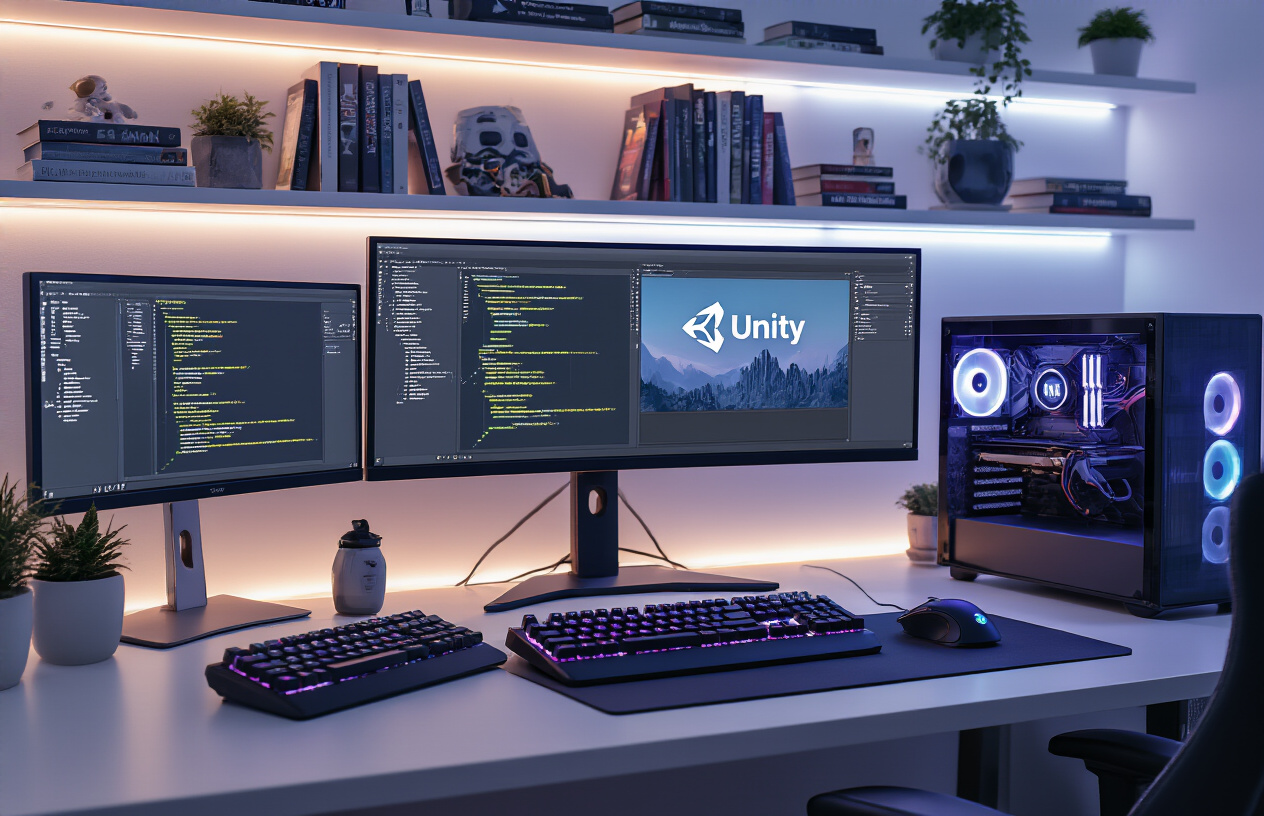
Getting your Unity projects right from the start makes all the difference in your game development journey. By setting up your project structure properly, writing clean and scalable code, and keeping performance at the front of your mind, you’re building a foundation that will save you countless hours of debugging and refactoring later. The optimization techniques we’ve covered—from managing your graphics pipeline to streamlining your assets—aren’t just nice-to-haves; they’re what separate smooth, professional games from choppy, frustrating experiences.
Take advantage of Unity’s built-in profiling tools and make optimization an ongoing part of your development process, not something you tackle at the end. Start implementing these practices in your next project, even if it’s just a small prototype. Your future self will thank you when you’re shipping polished games instead of wrestling with technical debt. Remember, great games aren’t just about amazing ideas—they’re about executing those ideas with solid technical fundamentals.










